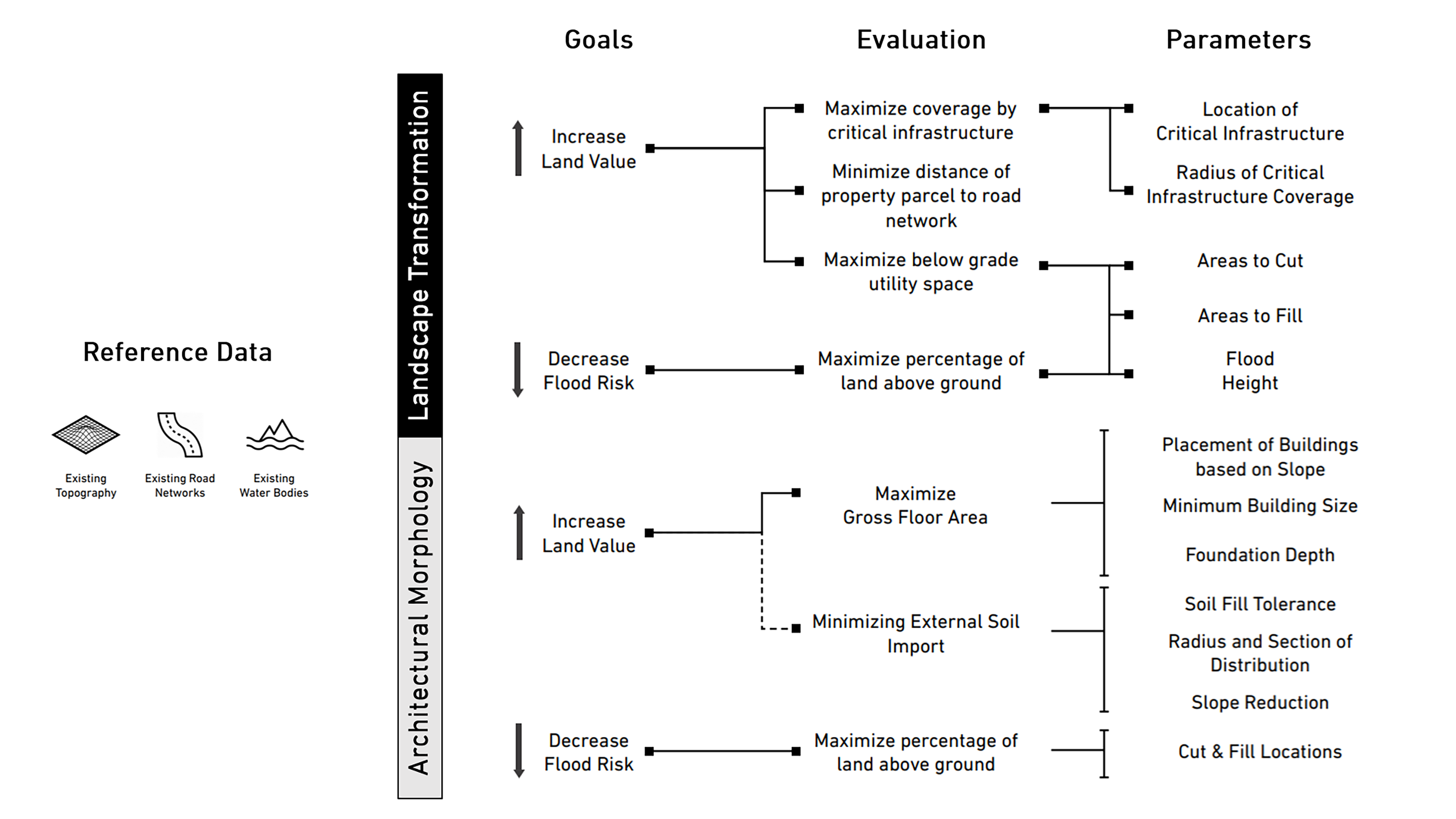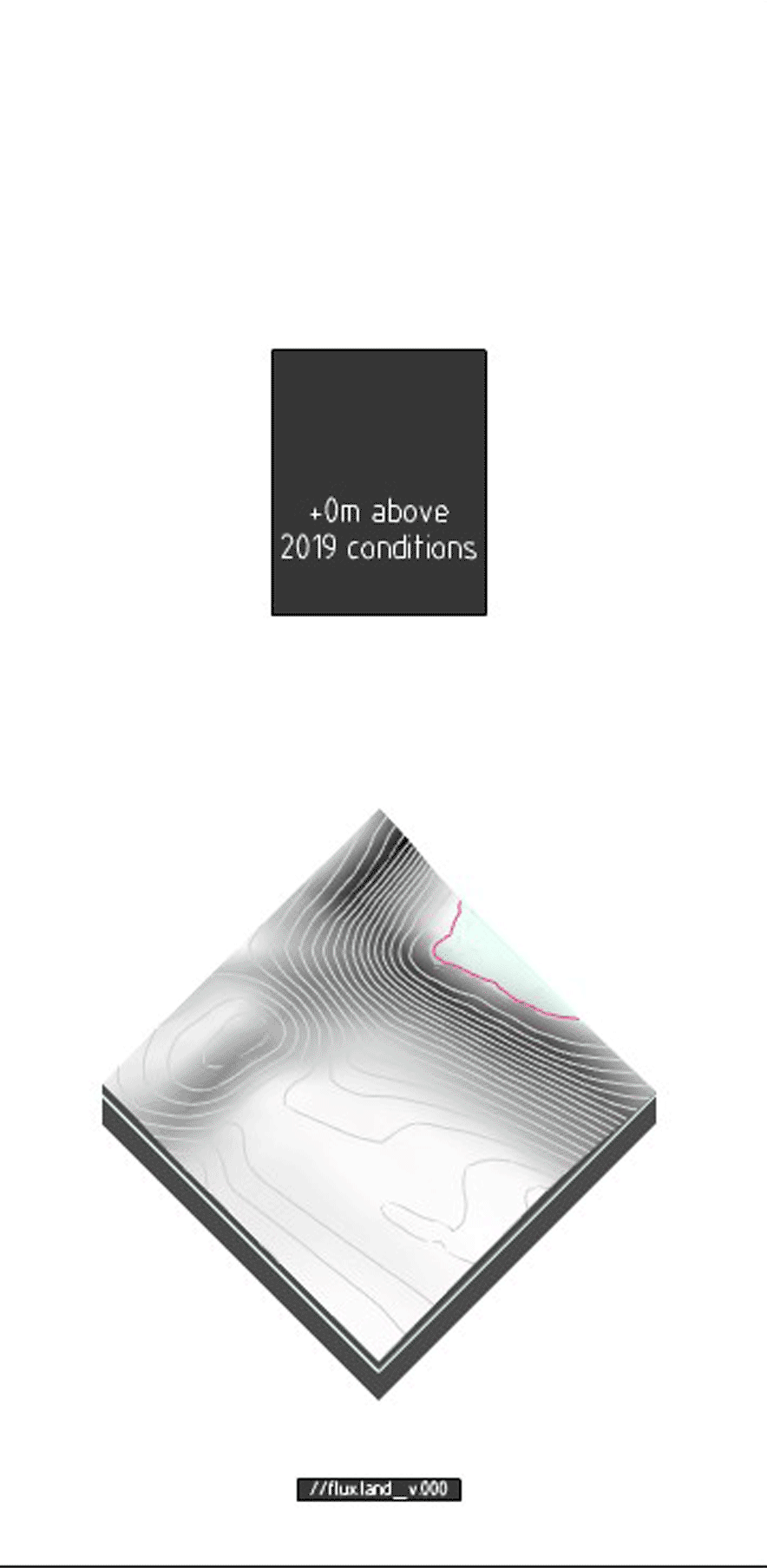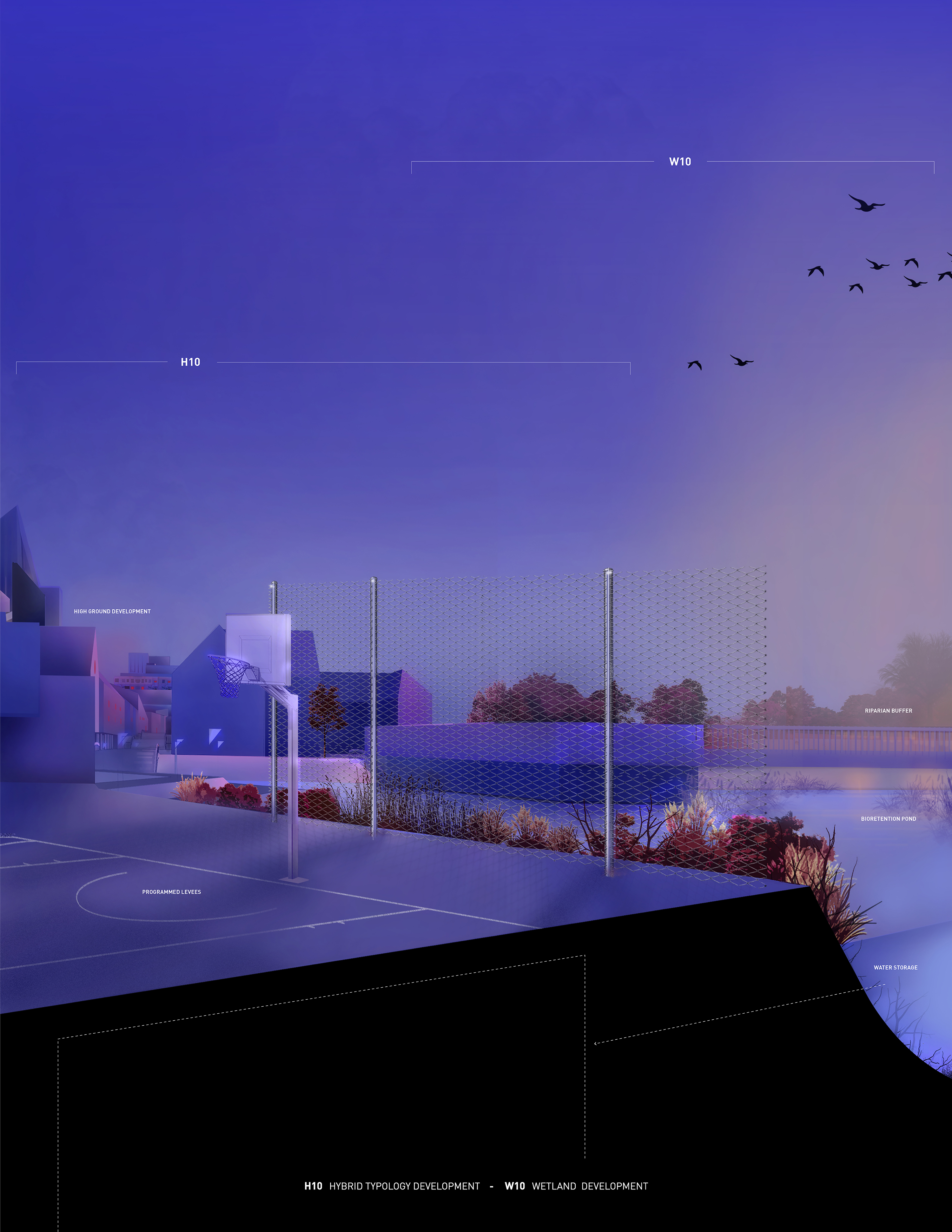By leveraging modern advances in optimization algorithms and methodologies such as generative design, the response to a development cluster can be designed systematically through well-defined goals, parameters and performance metrics. For example, to achieve the competing goals of increasing land value while decreasing flood risk, a proposed design is evaluated by factors such as access to near-by critical infrastructure, percentage of land above the average water-datum, or the distance of the property parcel to other important transportation, energy and potable networks. Within this defined cluster, our data-driven algorithm identified areas to cut (make room for water) and fill (increase height of flood datums) and, as such, a code for the placement and setback of buildings, location of new critical infrastructures, and open space ratios. All optimized based on different configurations, parameters, and performance metrics.
This ultimately resulted in a novel set of highly contextual and nuanced zoning codes, uses, programs, building and landscape typologies.
The Transect Codes are a matrix of land use possibilities based on the continuous spectrum of inundated, wet, and dry conditions. The matrix aims to optimize flood-prone urban environments by addressing existing and adjacent conditions. Interventions occur at three levels of resolution: Topological editing at the macro-scale, Wet urbanism at the mesoscale, and adaptive architectural typologies at the micro-scale. Ultimately, the implementation of these tools aims to directly improve the integration of ecosystem services in urban environments while striving for habitable land.
The bias embedded within the matrix denies the wet/dry binary to embrace the reality that many urban coastal areas face amidst climate instability. Substantial evolution to urban forms, infrastructure, and individual lifestyles need to change to adapt to new climate conditions and inundation gradients. This concept is investigated using the transect matrix:
-

Generative Design Process -

Generative Terraforms Iso -

Generative Terraforms Plan -

Generative Terraforms Topo Trey Iso -

Generative Terraforms Transect Code Horizontal -

Generative Terraforms Transect Code Iso -

Generative Terraforms Transect Code Plan -

Terraforms render 1 -

Terraforms render 2 -

Terraforms render 3